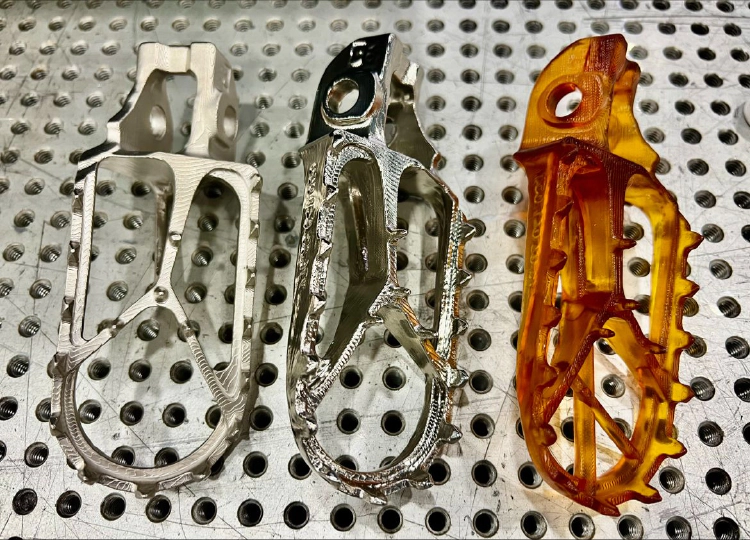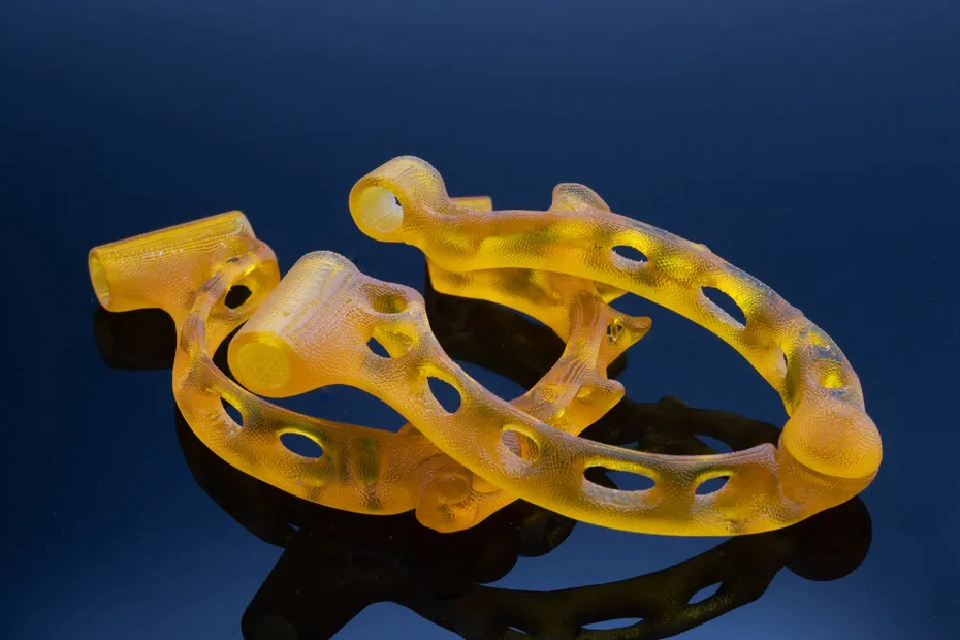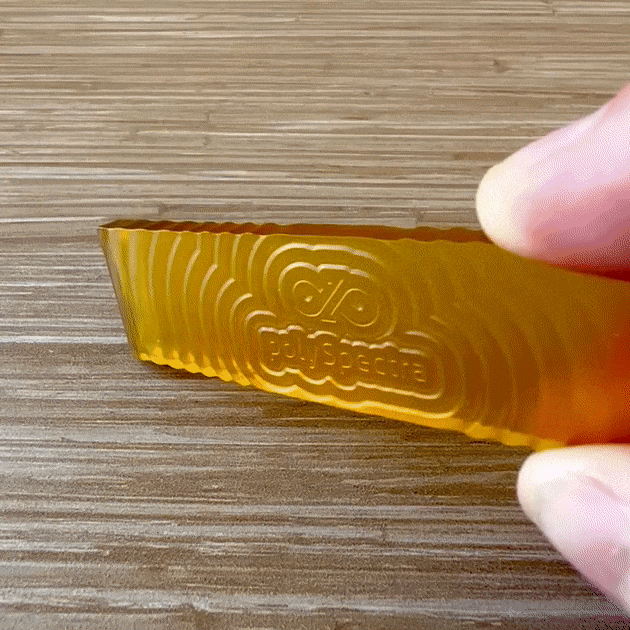Moving mass around requires energy. And that’s exactly what transport is - moving mass, be it people, cargo and everything in between.
When applying that very simple idea to the automotive world, this means that mass directly affects fuel economy. Heavier cars burn more fuel, and burning more fuel means more emissions. We know this isn’t a good thing.
But thanks to the wonders of additive manufacturing and material science, there are several pathways to reducing the mass of road going vehicles, and therefore improving their fuel economy and reducing emissions. This is a good thing.
Some approaches to lightweighting utilize additive manufacturing to reduce the mass of components via optimized geometry that would be actually impossible to manufacture without 3D printing.
Other approaches favor mass reduction via the selection of lightweight materials such as engineering plastics and composite materials such as thermoset-based Carbon fiber reinforced plastics (CFRPs) and modern thermoplastic composites.
At polySpectra, we like both of those ideas, so let’s take a look at the two of these approaches in more detail.
Lightweighting with Geometry
There was an old adage in mechanical engineering that recommended that “when in doubt, make it stout.”
This simply meant that in the absence of any technical certainty, just build things a little bit thicker, or wider. In other words, the engineers of old used to over engineer things by considerable margins.
The idea of simply adding more mass to make things stronger lasted for millenia, and was great for building huge things that didn’t need to move around too much.

The Sasanid Bridge,Built stout,1700 years ago.
Building it stout was the dominant way of thinking for thousands of years. And it was this way until Euler-Bernoulli beam theory came along in the 18th century and showed us that beams assembled into trusses were a much better way of carrying loads with lighter structures.
When this theory was demonstrated a few decades later with the construction of the Eiffel Tower, the notion of building things stout quickly dropped out of fashion.
And with that, structural engineering had been elevated from an art, into a science.
Form Follows Force
When it comes to modern engineering disciplines such as aerospace, automotive and even civil engineering, simply adding more mass to make things stronger wasn’t an option.
However, by using design tools such as topology optimization and generative design, engineers today can reduce the mass of structural components by ensuring that the material is placed only in the load paths (where it needs to be), and nowhere else.
To lightweight a part with topology optimization, typically the unoptimized (human-designed) 3D CAD geometry file is uploaded into a topology optimization program (such as Altair Inspire or nTopology). The various loads are applied in the software to represent real life operating conditions, and a target is set for a specific outcome (such as % of mass reduction needed, to avoid certain resonance modes, or to maximize stiffness).
The simulation is started, it calculates the load paths according to the user’s previous inputs, and it removes material that is not needed from around those paths. Wash, and repeat. The software can generally run for a specified number of iterations, or until convergence is reached and the optimized part is created.
Generative design similarly calculates the optimum topology for given conditions, but uses a different approach. In Generative Design, the process starts not with a human-made CAD file but with a set of requirements and constraints that define the design space. The program is run, and it outputs multiple options that satisfy the requirements.
Other geometric optimization softwares such as Gen3D utilize a lattice-based approach to lightweighting, where the density of a part can be reduced by use of load-bearing lattice structures in a variety of different geometries.
The result is an incredibly lightweight part that remains as strong or as stiff as the designer wants it to be. Thanks to these geometric optimization tools, additive manufacturing and modern material science, form no longer follows function, it follows force.
These optimization processes can be applied to metals, plastics, composites, and even concrete. Products designed with these methods have found themselves in some of the most high-end car manufacturers on the planet. Such marques include Aston Martin, Bugatti, Porsche and BMW.
The automotive world has already begun to embrace the organic forms provided by topology optimization and generative design to the mass production of vehicles, and this really is just the beginning.
3D printed resins such as COR Alpha are particularly well suited for optimized geometries in automotive manufacturing, as the cured resins demonstrate isotropic material properties.
This is beneficial because in real life, loads don’t always follow one direction- they are variable in direction and magnitude depending on various dynamic conditions . So while topology optimization is possible with anisotropic 3D printing processes such as FDM, better and more mechanically predictable optimized parts can be produced with isotropic processes such as resin printing.
Lightweighting with Materials
On the other side of the lightweighting coin, there is the option of lightweighting through careful material selection.
Automobiles and trucks are heavy things. They’re heavy because they are made from mostly metal, which as we know, is very dense.
By mass, a typical passenger car consists of about 65 percent steel and iron. The rest is glass, plastics, and elastomers.
What if we could bring that 65% down a little bit, simply by replacing the metals with modern plastics and composites?
Well, we can. And it’s not the first time that the automotive industry has attempted a shift to plastics. Bakelite has been used in automotive panels for over a century, and even Henry Ford wanted to build a car out of bioplastic resins.
The biggest shift came in the 1970s when the fuel crisis forced American consumers to move away from the heavily chromed (and just heavy) cars of the 50s and 60s and embrace smaller, lighter, and more fuel efficient vehicles.
This meant, for the most part, replacing heavy metal components (such as chrome bumpers) with durable engineering plastics such as ABS, and by replacing traditionally metal trim parts with metal-plated plastics.
This is how it has been since the 1970s. And it hasn’t changed much in that time, largely due to the limitations of the plastics in question. They’re great for durability, impact resistance and aesthetics, but they fall short for more demanding applications.
The last decade has seen major advances in manufacturing processes and plastics/composite materials resulting in enhanced material properties such as higher strength, HDT, stiffness, toughness, and pretty much any parameter you can think of.
The image below shows one such component for the Asiga motorcycle, which was optimized, printed with COR Alpha resin, and then metal plated.
This demonstrates an example of a part that has been made lightweight with both geometric optimization and with clever material selections.

In a nutshell, this means that modern plastics can be used in a much broader range of demanding environments, and can replace a higher percentage of metal components, in areas that your grandpa’s polymers wouldn’t dare.
Ratios for Lightweighting
Let’s look at a couple of important parameters to consider when lightweighting.
You have probably heard of the term strength-to-weight ratio.
This ratio, more properly known as a material’s specific strength, is incredibly important in selecting a lightweight but strong material.
Using materials with a high specific strength means that less of that material can be used while still having the strength required for the task.
It’s a lighter weight part with the same volume, but it still does the same job as the heavier material that it replaced.
Examples of metal parts that can be replaced with high specific strength plastics include brackets, fluid tanks, and fasteners.
Other similarly important ratios include the stiffness to weight ratio, which is also known more formally as the material’s specific stiffness.
Materials with a high specific stiffness are incredibly light but rigid. Examples of high specific stiffness car components include aerodynamic spoilers, which need to retain their shape while undergoing large aerodynamic loads.
Carbon fiber reinforced plastics (CFRP) are often preferred for aerodynamic surfaces due to the material’s high specific stiffness. These have traditionally been made with thermoset resin matrices, but thermoplastics are becoming increasingly popular for applications that do not require the thermal stability of a thermoset.
Chopped pieces of carbon fiber can also be added to bulk materials to enhance their properties.
This is common in FDM 3D printing, where chopped carbon fiber is added to thermoplastics such as nylon, ABS, PETG and PEEK, which enhances the specific strength and stiffness of the material.
Chopped carbon fiber can also be added to thermoplastic pellets for injection molding to create highly accurate, and super strong/stiff parts.
Injection molded thermoplastic composite parts is one avenue that we at polySpectra will be keenly investigating in tandem with our own 3D printed molds.
Conclusion
We have looked at two major ways of lightweighting with additive manufacturing, both from a geometric standpoint, and from a materials standpoint.
The domains of geometric optimization and materials science have both been significantly enhanced with additive manufacturing, and this trend is set to continue.
Thanks to our research grant from the Department of Energy, polySpectra and our industry partners will continue to push the boundaries of what is possible in 3D printed tooling, injection molding and also in 3D printed car parts.
It’s a glorious time to be involved in these new technologies, and we at polySpectra, as the kids like to say, are absolutely here for it.
If you would like to know how automotive additive manufacturing can help with your company, then feel free to book a call with Rakesh Jain, polySpectra COO.












